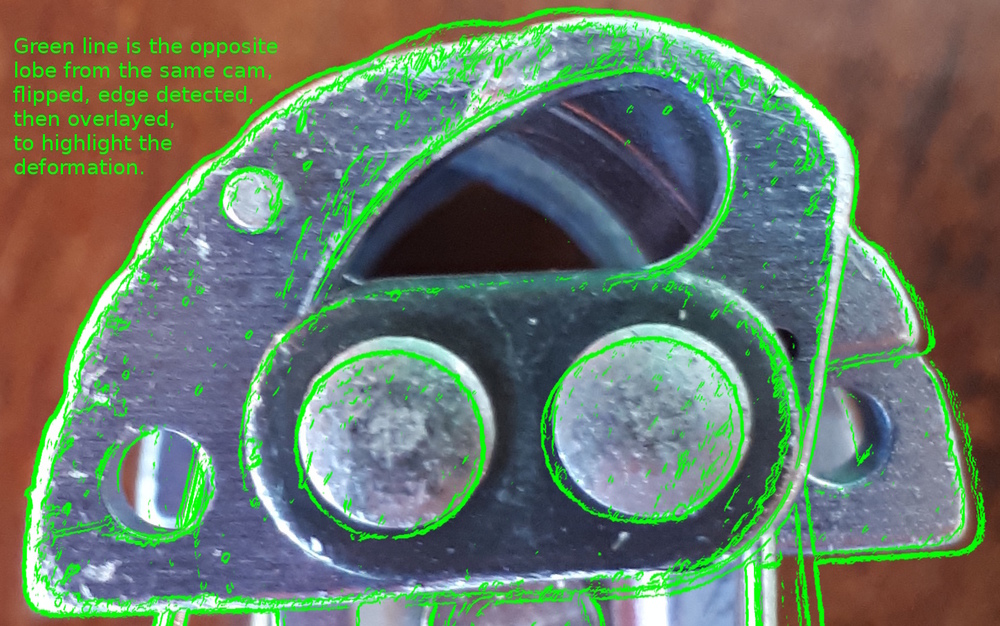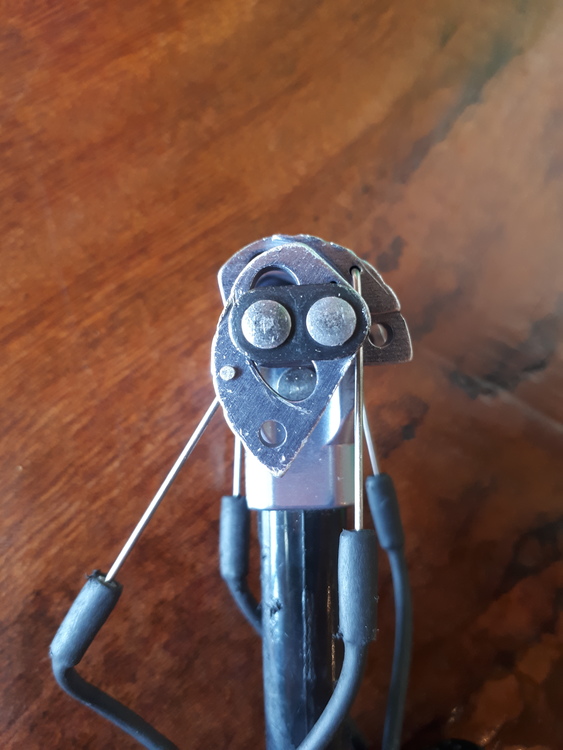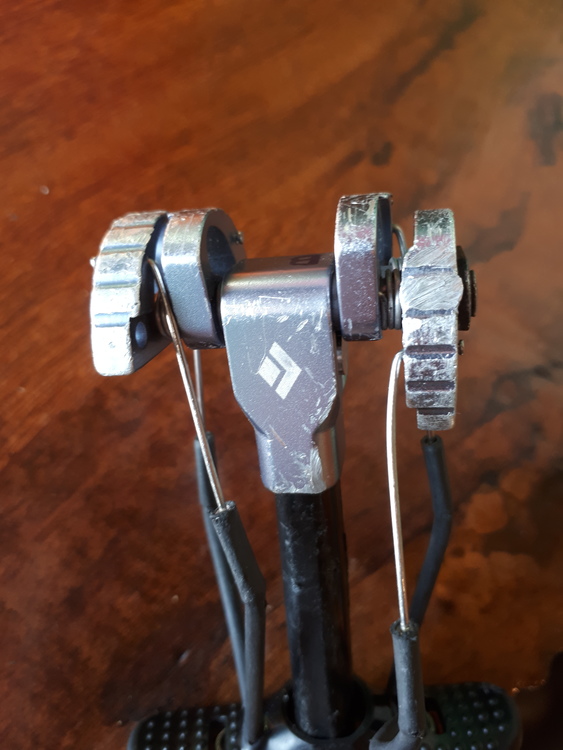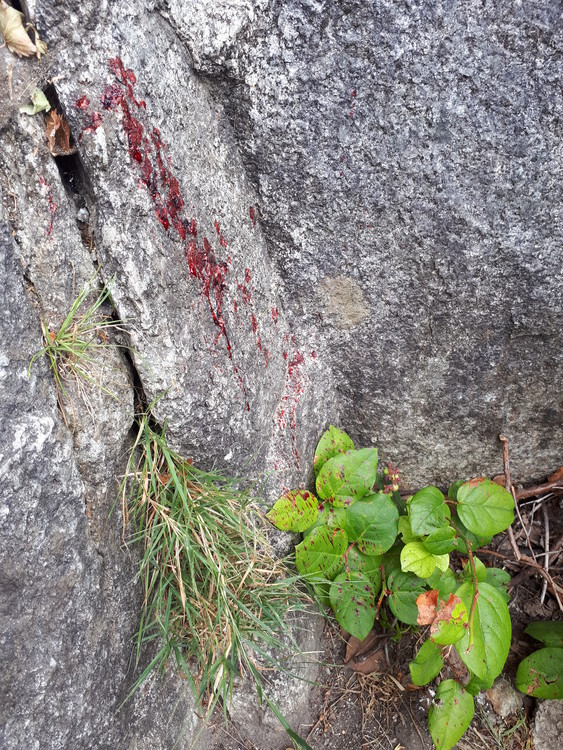Structural Failure of Black Diamond Ultralight Camalot Size 0.4 Resulting in Injury
|
|
Summary
A confidence inspiring placement of a Black Diamond Ultralight Camalot Size 0.4 failed in an unexpected situation resulting in an injury. Given the circumstances and preliminary conclusion, anyone using smaller size dual axle cams may want to reconsider what cams to include in their rack, or reconsider how this gear is placed. In particular, tighter yet not over cammed placements will make use of a thinner and therefore weaker part of the lobe on dual axle cams, since a hole is needed in the lobe in order to accommodate the opposite axle while pivoting. This weaker section of the lobe deformed in the scenario outlined here, reducing camming action, which is the likely reason for failure. The Scenario A Black Diamond Ultralight Camalot Size 0.4 was placed in a granite crack with good rock on the climb “Neat and Cool” in Squamish, just before the first leftward traversing crux. The placement seemed very confidence inspiring to a leader experienced in placing gear and who has fallen on cams countless times. The placement was deep enough to allow for some amount of sliding and movement before catching, the crack wasn’t particularly flared, the rock seemed of good quality and is clean due to the popularity of the route, and the cam lobes were somewhat tightly compressed but not what one would normally consider a risk for getting stuck due to over-camming. The surrounding rock is notable for having slightly more texture and shape than “standard” Squamish granite, but the placement in the crack seemed to fit well. The orientation of the cam was slightly left, which oriented it more towards where the fall would initially start to catch due to the left traversing nature of the climb, but not in the directly downward direction where the greatest forces would likely be exerted. This orientation was picked mainly to ensure the placement fit well to the shape of the crack while still being reasonably oriented. The cam was extended with a non-extended 60cm "trad draw", so 20cm plus carabiners plus the stock sling on the cam. The rope was a 9.2mm Mammut Revelation. The Fall A few seconds before falling, the climber communicated to the belayer that the fall would likely occur, which allowed the belayer to be ready to give a slightly dynamic catch. The belay and climber both weight about 70kg. The fall was an intentional release from about 1m above the placement with about 10m of rope out and insignificant rope drag. The fall initiated slightly left of the cam placement but without significant pendulum risk. Those familiar with the climb might expect a higher pendulum risk, but the climber incorrectly tried to go up, with the fall occurring with right hand on the platform more directly above the cam placement. Upon falling, the size 0.4 cam failed and shot into the shin of the falling climber, resulting in injury requiring medical attention including stitches. A size 1 Black Diamond Ultralight Camalot caught the fall, keeping the climber several meters off the ground. The Failed Cam Inspection of the failed cam showed that one of the lobes was stuck in the closed position due to a deformation, which caused the lobe to catch on the opposite axle preventing it from opening up. The deformation of the lobe occurred where the lobe is thinner due to the hole needed to allow the opposite axle to slide through while pivoting. This cam was nearly brand new, purchased 2 months prior, receiving very light use, having caught either 0 or 1 prior lead falls. The manufacturing code is 7054-2. Theory of Failure The theory discussed among the experienced climbers that witnessed the event is that the cam failed due to the weaker part of the lobe compressing and deforming, resulting in loss of sufficient camming action. The slightly left orientation of the placement may have caused it to move somewhat while catching, which could have oriented the deformed lobe into a position in which it received a pressure point rather than more evenly distributed pressure, but this is pure speculation. Conclusion Based on the theoretical mechanism of failure, it may be reasonable to consider avoiding placing smaller sized dual axle cams tightly such that the thin part of the lobe is in contact with the rock. This reduces the effective range of the cam and makes one consider if it’s perhaps sensible to not use smaller size dual axle cams at all, since this diminishes their main advantage of increased range compared to single axle cams. Edited 2018.08.11: - Added information about the extension sling. - Added the sentence explaining why there wasn't a pendulum risk due to accidentally climb up instead of traversing left. - Added climber and belayer weights and rope model. |
|
|
|
|
|
This only confirms my bias for Mastercams in this size range. |
|
|
Great write-up, Brian. I am familiar with the climb and this traverse always spooked me a bit. Now I will be sure to protect it with single axle cams only! |
|
|
I don't see the reasoning for the cause to be due to the double axel. |
|
|
Are you holding Black Diamond liable? |
|
|
Is my X4 okay to use? |
|
|
I never understood the point of buying the UL .4 and even .5. |
|
|
@Brian, could you estimate whether the deformed lobe was the lowest one or not? |
|
|
Stiles wrote: Are you holding Black Diamond liable? How would you? Lawyers up? Meal ticket? |
|
|
You're either indicating that the lobe was deformed prior to this placement which inspection should have caught or you're saying the cam deformed during this fall with compression and then ripped. |
|
|
Great report Brian Braunstein. I agree with your analysis and conclusions. Mike wrote The second being unlikely and would require the cam was poorly placed already and rotated into a worse position after deforming or rock breaking since the force required to deform the load is the same force that catches the climber.You are not making sense here. Mike wroteI hope the injured climber heals quickly but this isn't the cam's fault. The lobe deformed under compression from a relatively minor fall. Your conclusion does not seem to follow. Cams lobes should not be plastically deforming at loads well under what they are rated to hold. (A non parallel, tapering crack can lead to higher compression on lobes than normal camming angles would predict. But well designed cams should have no issue with this. A cam with minimal meat at the lobe contact point is an issue.) |
|
|
Here is a brief discussion on this very topic: Tony B wrote: rgold wrote: Tony B wrote: |
|
|
Interesting for sure. You note that this rock has slightly more texture than typical of the rock in the area and I have to wonder if a crystal was sticking into the cam at the deformation point. I had that happen with a green alien that blew and the deformation/flattening of the lobe looks very similar to yours in spite of the alien lobes being solid with no "weight saving" material removed (kind of impossible to window an alien lobe). One of the alien lobes was on a slight crystal that looks like it punched into the cam lobe when I fell and blew the piece which miraculously caught again about foot further down the crack. |
|
|
I've seen this on c4 too. I might have a few in the garage in this condition. Enough use and the .4 and .5 will eventually have this deformation. |
|
|
John Wilder wrote: While I think the damage to the lobe isn't awesome, I don't think that would cause the can to rip.Compressive flattening of a cam lobe can readily lead to failure. Your claim isn't based in experimental reality or in theory. John Wilder wrote:That might be true, but it isn't the issue here. Nor in my book is a 0.4 a 'small' cam. What constitutes a small cam might be up to an individual, I have 6 sizes above the 0.4 BD and 5 sizes below. So on my rack it is a middle sized cam. |
|
|
Sounds like the piece was placed perpendicular to the fall and was not properly extended. |
|
|
I've had a yellow mastercam rip in almost exactly the same placement. Also looked textbook. I would imagine this failure is a function of a cam that walked (like mine probably did) rather than a structural issue with C4s. I would imagine that BD engineers have run various analysis on that part of the lobe, being the obvious weak point, to make sure it could withstand expected loads. |
|
|
I will not use my 0.4 UL, since the stem is almost the same size as the cams in a tight placement. I could see a case where the cam is levered out of the placement with the rigid stem. |
|
|
On the liability comment: no real damages, no lawsuit. The cost of a few stitches isn't worth the effort or expense. You could file a suit for nominal damages (if you had an expert who would testify that the product was defective as designed or manufactured) to make a point, but a recall, either forced by a consumer protection agency, voluntary or achieved through market forces if people stopped buying them would be more productive. I don't know if the possible greater weakness at near maximum compression is a defect rather than an intentional trade-off. Maybe its just a good reminder that cams on the small size are less trustworthy generally, although personally, I have come to trust the .4 c4 size as much as a 2 -- but maybe that is a result of using so many that are much smaller. |
|
|
I’ve also climbed Neat and Cool. I don’t remember the placements exactly but I remember it has a reputation for funky gear. OP did a lot to make his report look scientific, but the bottom line is you placed bad pro. I recently (in Squamish) ripped at .3/.4 offset and it popped me in the lip and broke me tooth. That piece has held dozens of falls. It was a bad placement. Nothing wrong with the cam. |

 Continue with onX Maps
Continue with onX Maps Continue with Facebook
Continue with Facebook





























